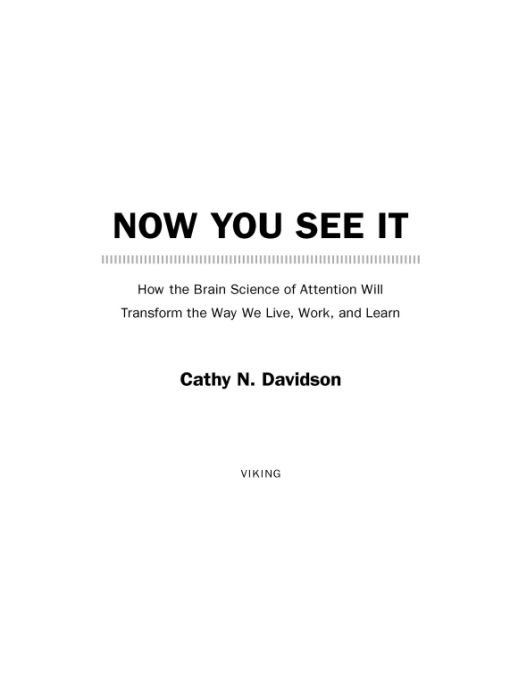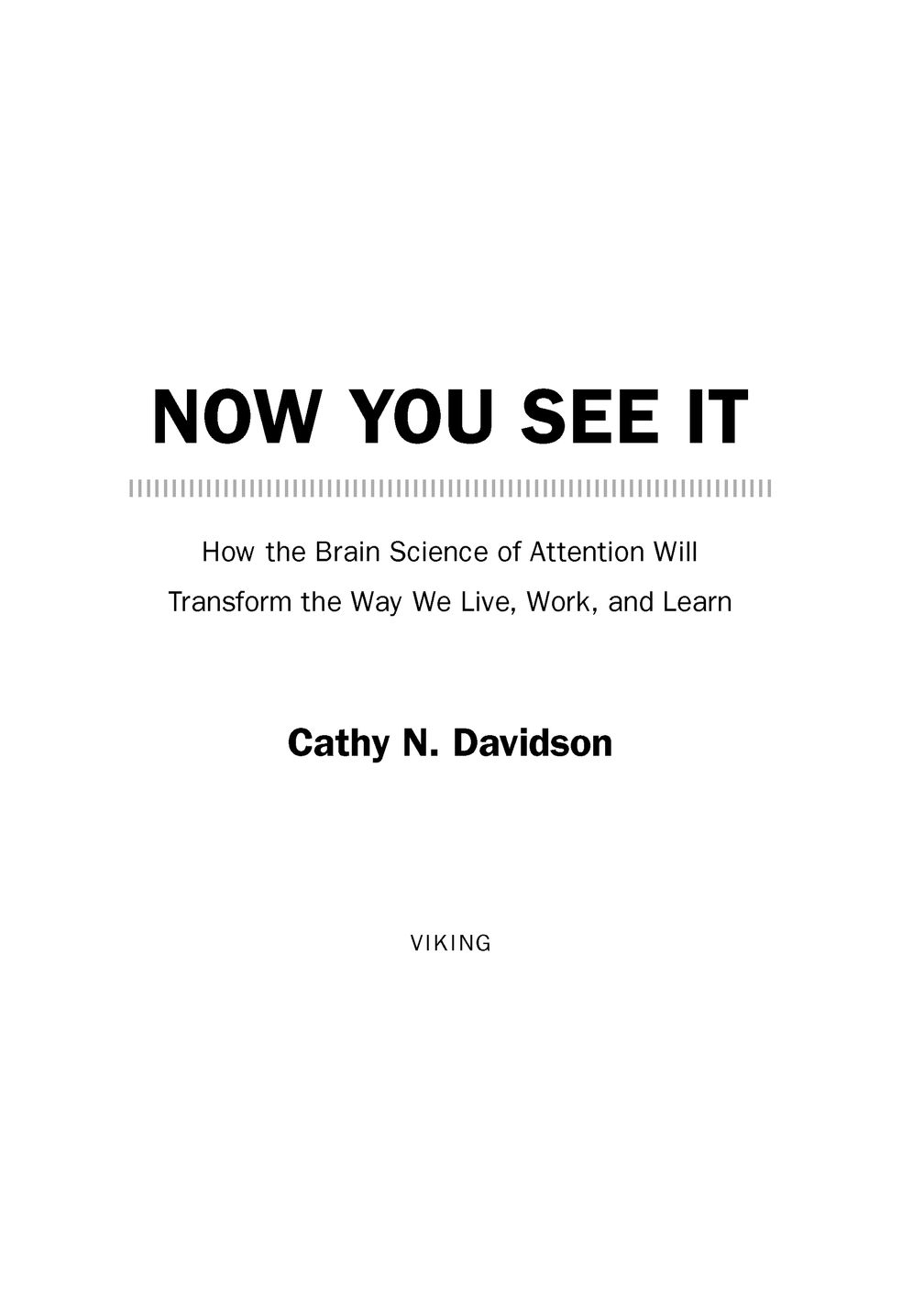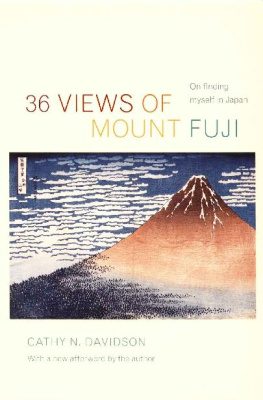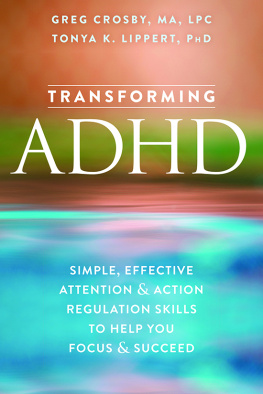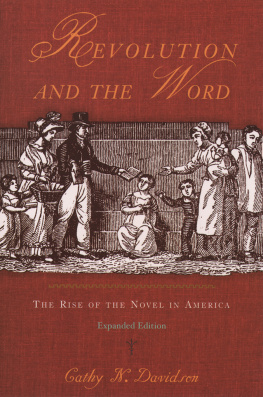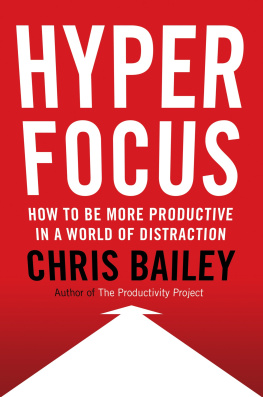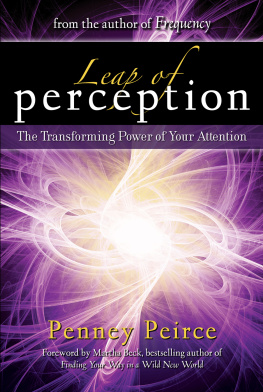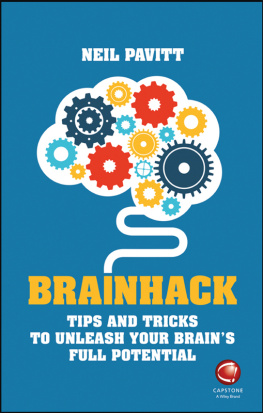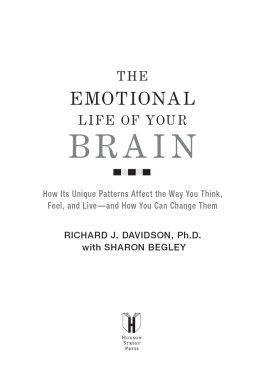Table of Contents
Other Books by Cathy N. Davidson
The Future of Thinking: Learning Institutions in a Digital Age
(with David Theo Goldberg)
Closing: The Life and Death of an American Factory
(with photographer Bill Bamberger)
Oxford Companion to Womens Writing in the United States
(co-edited with Linda Wagner-Martin)
Thirty-six Views of Mt. Fuji: On Finding Myself in Japan
Reading in America: Literature and Social History
Revolution and the Word: The Rise of the Novel in America
For Ken
Introduction
Ill CountYou Take Care of the Gorilla
Five or six years ago, I attended a lecture on the science of attention that was part of a luncheon series designed to showcase cutting-edge research by the best and brightest at my university. A philosopher who conducts research over in the medical school was talking about attention blindness, the basic feature of the human brain that, when we concentrate intensely on one task, causes us to miss just about everything else. Because we cant see what we cant see, our lecturer was determined to catch us in the act. He had us watch a video of six people tossing basketballs back and forth, three in white shirts and three in black, and our task was to keep track only of the tosses between the people in white. I hadnt seen the video back then, although its now a classic, featured on punked-style TV shows or YouTube versions enacted at frat houses under less than lucid conditions. The tape rolled, and everyone began counting.
Everyone except me. Im dyslexic, and the moment I saw that grainy tape with the confusing basketball tossers, I knew I wouldnt be able to keep track of their movements, so I let my mind wander. My curiosity was piqued, though, when about thirty seconds into the tape, a gorilla sauntered in among the players. She (we later learned a female student was in the gorilla suit) stared at the camera, thumped her chest, and then strode away while they continued passing the balls.
When the tape stopped, the philosopher asked how many people had counted at least a dozen basketball tosses. Hands went up all over. He then asked who had counted thirteen, fourteen even, and congratulated those whod scored the perfect fifteen. Then he asked, And who saw the gorilla?
I raised my hand and was surprised to discover I was the only person at my table and one of only three or four others in the large room to do so. Around me, others were asking, Gorilla? What gorilla? Some people were getting annoyed. Several muttered that theyd been tricked. Instead of answering them, the philosopher rewound the tape and had us watch again. This time everyone saw the gorilla.
Hed set us up, trapping us in our own attention blindness, priming us for his lecture. Yes, there had been a trick, but he wasnt the one who had played it on us. By concentrating so hard on the confusing counting task, we had managed to miss the main event: the gorilla in the midst. In a brief experiment that had required us simply to pay attention, it was our own minds that had deceived us.
Except I hadnt been deceived. Id seen the gorilla, not because Im better at this than anyone elseIve taken enough attention tests since that day to know Im notbut precisely because I wasnt paying attention to counting basketballs. Thats how the visual cortex is structured. We think we see the whole world, but we actually see a very particular part of it. For a lot of neuroscientists, thats the cautionary message of the gorilla experiment: Were not nearly as smart as we think we are.
In a very real sense, this book began that day. Attention blindness is the fundamental structuring principle of the brain, and I believe that it presents us with a tremendous opportunity. My take is different from that of many neuroscientists: Where they perceive the shortcomings of the individual, I sense opportunity for collaboration. If we see selectively but we dont all select the same things to see, that also means we dont all miss the same things. If some of us can accurately count basketballs in a confusing situation and some can see the gorilla, we can pool our insights and together see the whole picture. Thats significant. The gorilla experiment isnt just a lesson in brain biology but a plan for thriving in a complicated world.
Without focus, the world is chaos; theres simply too much to see, hear, and understand, and focus lets us drill down to the input we believe is most useful to us. Because focus means selection, though, it leaves us with blind spots, and we need methods for working around them. Fortunately, given the interactive nature of most of our lives in the digital age, we have the tools to harness our different forms of attention and take advantage of them.
But theres an important first step, and if we pass over it, well never be able to capitalize on the benefits of our interactive world. Its not easy to acknowledge that everything weve learned about how to pay attention means that weve been missing everything elseincluding the gorilla. Its not easy for us rational, competent, confident types to admit that the very key to our successour ability to pinpoint a problem and solve it, an achievement honed in all those years in school and beyondmay be exactly what limits us. For over a hundred years, weve been training people to see in a particularly individual, deliberative way. No one ever told us that our way of seeing excluded everything else. Its hard for us to believe were not seeing all there is to see.
But heres the kicker: Unless were willing to take attention blindness personally, were going to either flub the basketball count or miss the gorilla every single time. We cant even develop a method for solving the dilemma until we admit theres a gorilla in the room and were too preoccupied counting basketballs to see it.
A great cognitive experiment is like a fantastic magic trick performed by an exceptionally skilled magician. It makes us see things about ourselves that we dont normally see and helps us to believe what might otherwise be impossible to accept about the world we live in. An experiment allows us to see the imperfect and idiosyncratic way our own brain works. Thats a key difference between magic tricks and scientific experiments. Scientists dont contrive experiments to trick, surprise, embarrass, or entertain us. They devise experiments so they can learn more about what makes humans tick.
When they were just starting their careers, the young Harvard psychologists Christopher Chabris and Daniel Simons first performed the now-famous gorilla experiment, or what theyve come to call the invisible gorilla. A colleague down the hall was doing a study on fear and happened to have a gorilla suit handy. The rest is history.
Under normal testing conditions, over half of the participants miss the gorilla. Add peer pressure and that figure goes way up. In a live reenactment of this experiment performed in London, with four hundred very social college students packed into an auditorium, only 10 percent noticed the gorilla stride across the stage. We didnt keep an exact count at our event, but our numbers must have rivaled those of the college kids in London. In our case, the most likely reason so few saw the gorilla was that academics like to do well on tests. And thats the annoying lesson of attention blindness. The more you concentrate, the more other things you miss.

